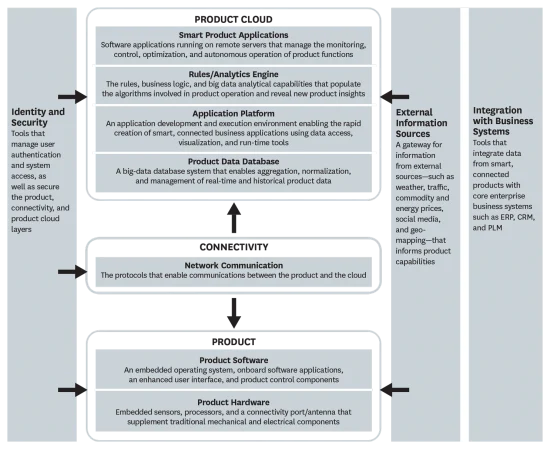Michael E. Porter and James E. Heppelmann write in the Harvard Business Review about a whole new class of smart connected products — “complex systems that combine hardware, sensors, data storage, microprocessors, software, and connectivity in myriad ways.”
“These new types of products alter industry structure and the nature of competition, exposing companies to new competitive opportunities and threats. They are reshaping industry boundaries and creating entirely new industries. In many companies, smart, connected products will force the fundamental question, What business am I in?”
Wall Street Journal: “This new wave of IT-based innovation–the third such wave in the past 50 years–is once more having a major impact on competition and strategy. In the 1960s and 1970s, IT brought automation to a number of discrete business processes, including transaction processing, financial planning, engineering design, inventory management, small business payroll processing and personnel records. Then in the 1990s, the connectivity and universal reach of the Internet enabled companies to integrate and better coordinate all their various processes, as well as to go beyond the boundaries of the enterprise and develop global supply chains and distribution channels and a large variety of online customer services.”
“The first two IT waves helped companies become significantly more productive by reengineering their operations, but their products were largely unaffected. This is now changing with the emergence of cloud computing, Internet of Things (IoT), Big Data and other major innovations whose combined impact is driving this third IT wave and the ensuing new era of smart connected products.”
“The world’s digital and physical infrastructures are essentially converging.”
Irving Wladawsky-Berger: “Just about everyone agrees that we are living in an increasingly global, integrated, complex . . . and unpredictable world. What can you do about it? The only possible answer is to take the same information technologies that are making our planet so much smaller and flatter, and use them to make our planet smarter – all its processes, systems, institutions, economies and nations.”

